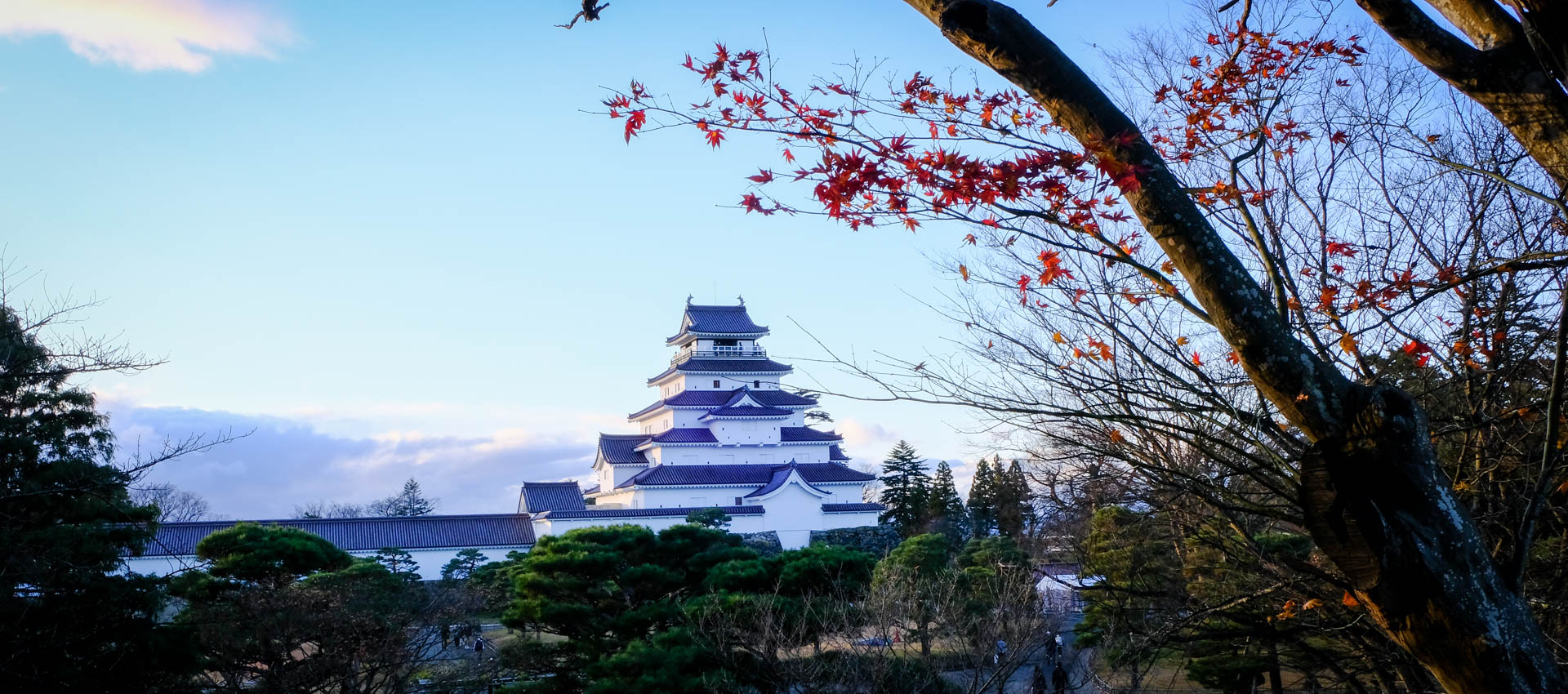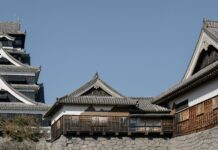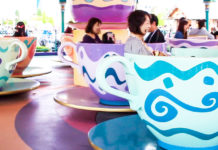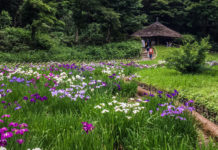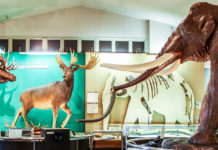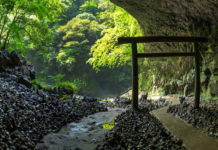The name Fukushima still carries negative associations after the tragic nuclear disaster in 2011. Ten years on and tourism is still rather low in this area. Smart, socially-conscious travelers would do well to take advantage of this and enjoy the area with low crowds while injecting tourist dollars into communities that could really use it. A wonderful gateway to this northern prefecture is the historic town of Aizuwakamatsu. Read on for our overnight itinerary.
Aizuwakamatsu overnight itinerary
The town is not large but is packed with interesting and unique sights, as well as quirky, small-town charm. Since none of the sights require too much time and are relatively close together, it is possible to see everything on our itinerary as a day trip. But to really linger and take it all in without rushing, we recommend the following:
Day 1: Midday arrival in Aizuwakamatsu, visiting Iimoriyama and Aizu Bukeyashiki. For dinner, enjoy regional specialties such as wappa meshi at the famous Takino restaurant or kitakata ramen at any of the many ramen restaurants around town.
Day 2: Visit Tsurugajo castle and Oyakuen garden, followed by sake shopping. Afternoon departure.
If you enjoy walking, it is possible to get around entirely by foot, but to maximize your time, we recommend the Akabe and Haikara-san tourist buses that go to all of the listed sights. A single bus ride on either bus is a flat fare of ¥210, and a one-day pass can be purchased at Aizuwakamatsu station for ¥600.
Iimoriyama: a hill with more than just a good view
The first stop in our Aizuwakamatsu itinerary is Iimoriyama, a hill on the outskirts of town with great historic importance. From the station, take the Akabe bus to stop A6, Iimoriyama Danchi. At the base of the hill are some cute touristy stalls selling snacks and souvenirs, as well as an escalator to the top of the hill. However, don’t take the escalator. Instead, bear left and follow the signs to Sazaedo, one of the most unique Buddhist structures in Japan.
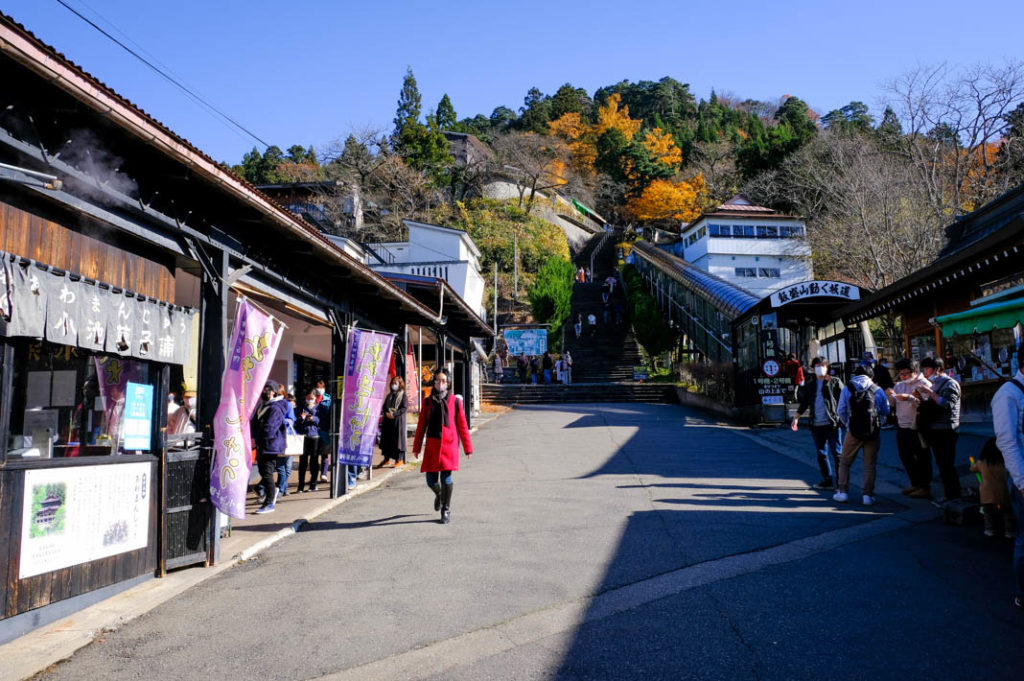
Sazaedo is a wooden pagoda that is the oldest surviving wooden structure from its time. But what is really striking about this building is its double-helix structure. One can enter, go all the way up and down again without ever seeing the visitors on the other side. Admission is ¥400, and absolutely worthwhile.
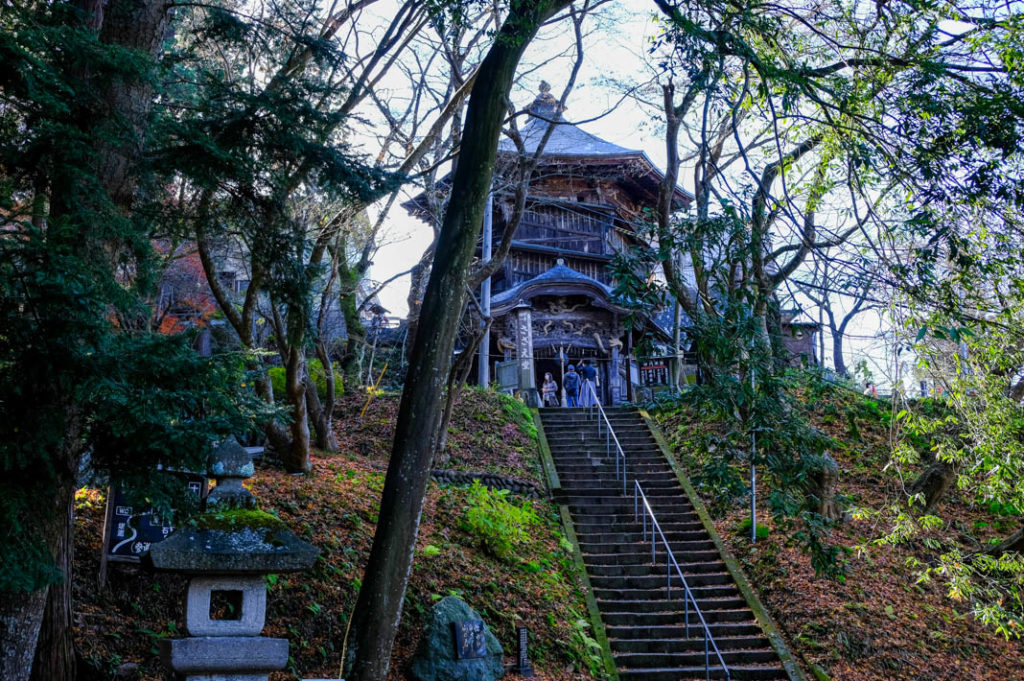
After Sazaedo, continue up the hill to a more sombre monument. Aizuwakamatsu is famous for being one of the last samurai towns and the sight of a major battle in the Boshin War of 1868 that ended the samurai way of life. During that battle, the White Tigers, a group of 19 young soldiers, committed the ritual suicide of seppuku on top of Iimoriyama. Their bodies are marked and buried along with other graves and monuments to that time. The air is heavy and still with incense from the many who come to pay their respects and take in the sweeping views from the top. Also notable are the creepy statues from Socialist world powers of the 1920s and 1930s who were impressed by the White Tigers.
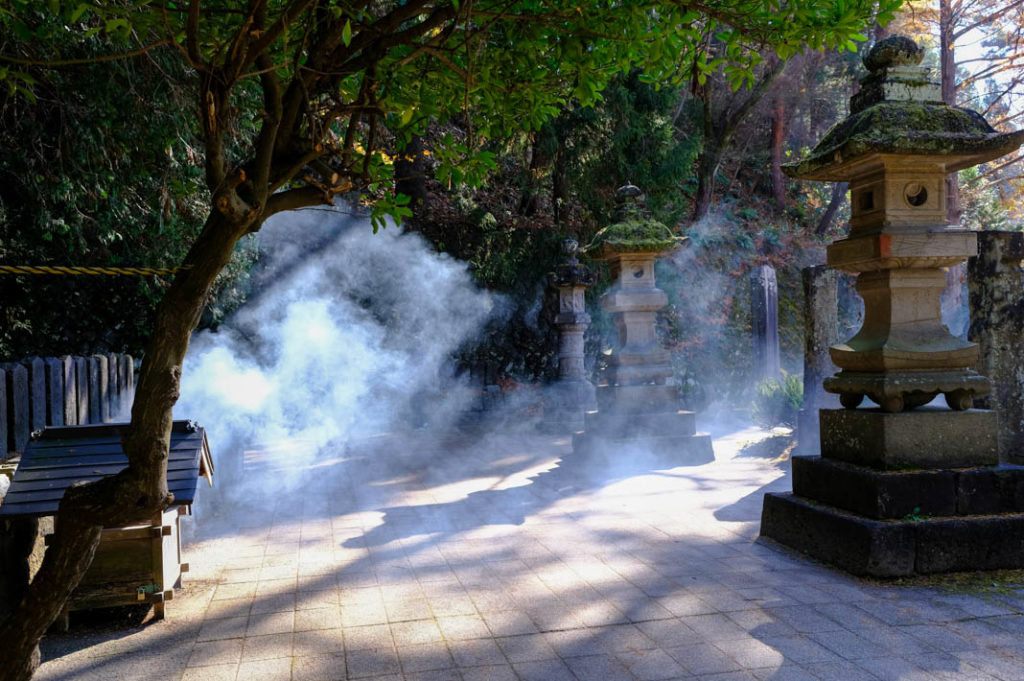
See how the Samurai lived at Aizu Bukeyashiki
The next stop on our itinerary is Aizu Bukeyashiki is a must for samurai aficionados and budding historians. To get here, take the Akabe bus to stop A11. This sprawling complex is an outstanding recreation of the villa of the Aizu clan’s chief retainer at the end of the samurai days. I’ve been to many house museums in Japan, and this is one of the best. Each of the 38 rooms is filled with period furnishings as well as mannequins in historic clothing. You can get an idea of how these rooms were used and what life looked like for a samurai family. Each room also includes English descriptions.

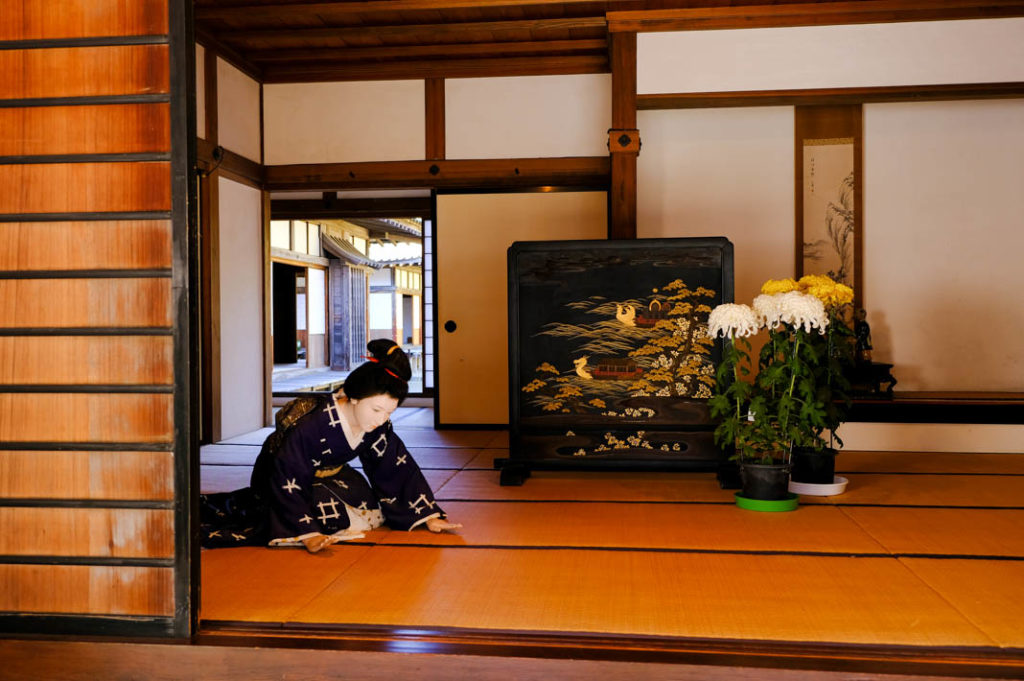
A highlight of the Aizu Bukeyashiki is the water-powered rice cleaning mill, where a water wheel turns rows of wooden pestles to pound the rice below. After the chief retainer’s residence, there are some smaller exhibits with weapons, photographs, and other artifacts. Sadly these exhibits are lacking English translations. Admission is ¥850.
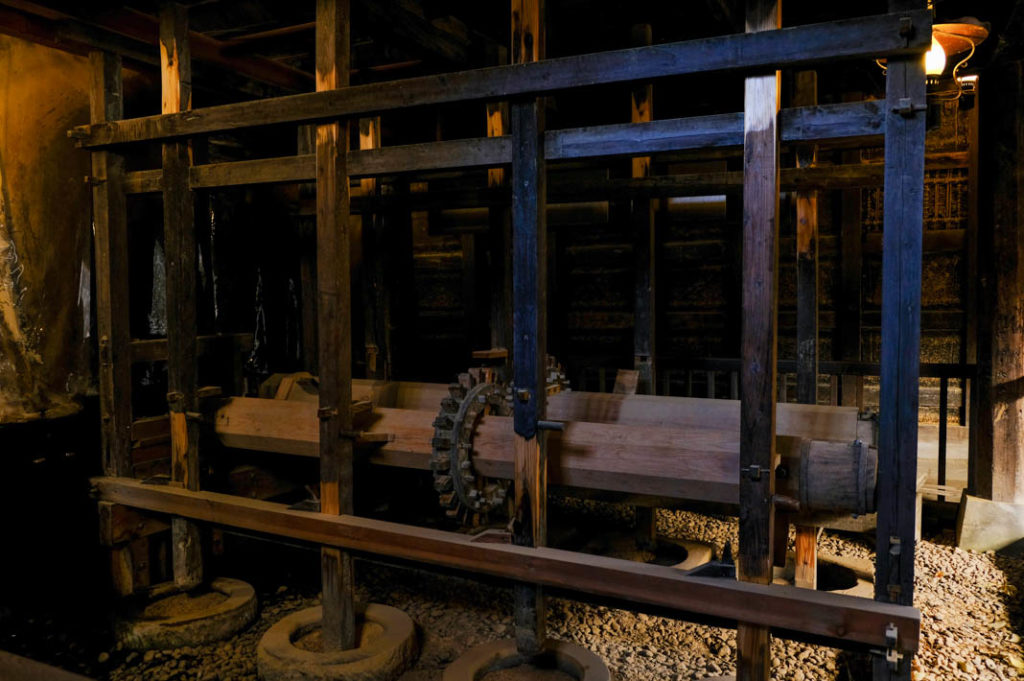
Tsurugajo, the red-roofed castle
Of course, visiting a castle town wouldn’t be complete without seeing the castle, the next destination on our itinerary. Depending on your lodging, you can take either the Akabe bus to stop A25 or Haikara-san bus to stop H16. The white-walled, five-story castle towering over its moat is an impressive sight. Plus, it’s the only Japanese castle with a red-tiled roof. The grounds are pleasant to stroll as well, especially with the colored leaves in autumn or cherry blossoms in spring.
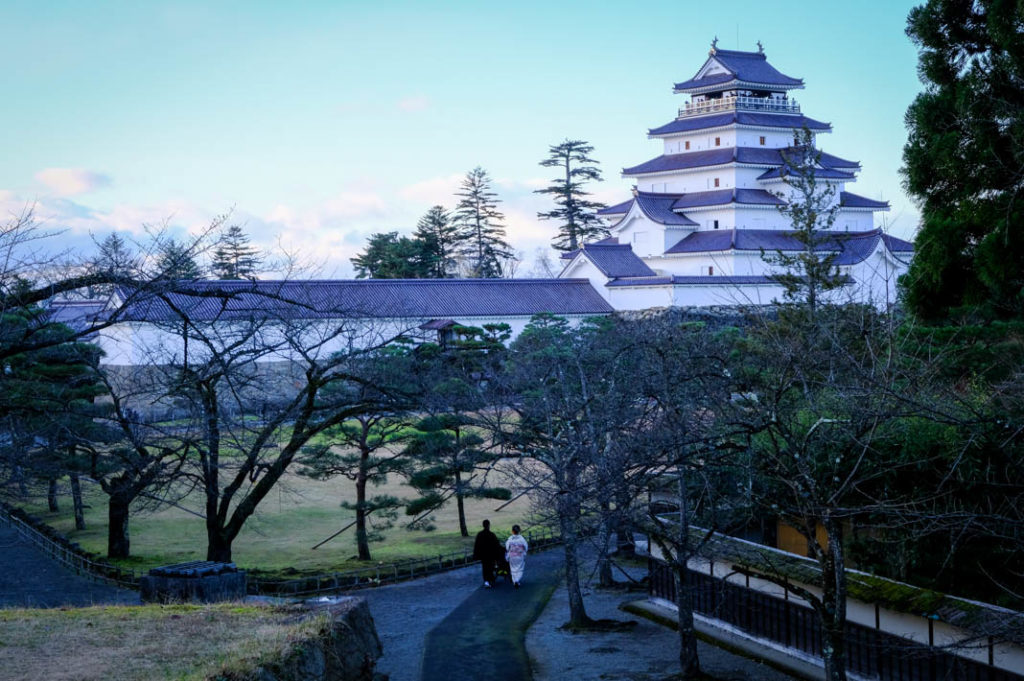
The museum inside the castle provides some good historical context to the area. Note that photography is prohibited on the first and second floor, as there are some fragile historic artifacts on display. The main reason for going though, are the sweeping views from the fifth floor. From up here, you have a panoramic view of the sprawling town below and the rolling hills beyond.


Admission to the castle only is ¥410, but for ¥520 you can also visit the Rinkaku tea room on the premises. Also available is a discounted combo ticket that allows access to the castle, tea room, and the last sight in our itinerary, Oyakuen garden.
Oyakuen, a strolling herb garden
From the castle, take the Haikara-san bus to stop H21, Oyakuen. This quaint, scenic garden is not as large or famous as other more illustrious gardens in Japan, but has a special ambience.

In addition to having a traditional Japanese garden with strolling paths and teahouses centered around a large pond, Oyakuen also houses a medicinal herb garden that was planted in the 1600s and still grows herbs today. The garden contains both maple and sakura, and so is particularly lovely in the autumn and spring. If time permits, enjoy some matcha tea at the tranquil tea house on the premises. While the medicinal garden is interesting, it looks a bit bleak in the colder months after the herbs have been harvested. Admission is ¥310.

Sake shopping for local brews
Fukushima is famous for its sake. After completing the above itinerary, consider picking some up at one of the many breweries or sake shops around town. Our favorites include Tsurunoe Shuzo, a female-owned brewery known for its clean-tasting “Yuri” label and award-winning “Aizu Chujo” label. Also noteworthy is Suehiro Shuzo, a large brewery in a beautiful wooden building from 1850. Suehiro Shuzo does give brewery tours as well, but they are all in Japanese.

If you can’t make it to one of the recommended breweries, pop over to Aizu Shurakukai. This large shop carries local and specialty sakes and is only a five-minute walk from the station. Feel free to ask the knowledgeable staff for their recommendations. Personally, I loved the many single-serve cup sakes available, with great designs from regional brewers. Grab a cup of sake for your train ride. The decorative cup will make a great souvenir from your trip to Aizuwakamatsu.
Getting to Aizuwakamastu
From Tokyo, it’s not difficult to get to Aizuwakamatsu. Take the Tohoku-Hokkaido Shinkansen from Tokyo Station to Koriyama Station. At Koriyama Station, transfer to the quaint Ban-Etsusai line for Aizuwakamatsu Station. The journey is three hours and costs ¥9,240 each way.
Post by Japan Journeys.



